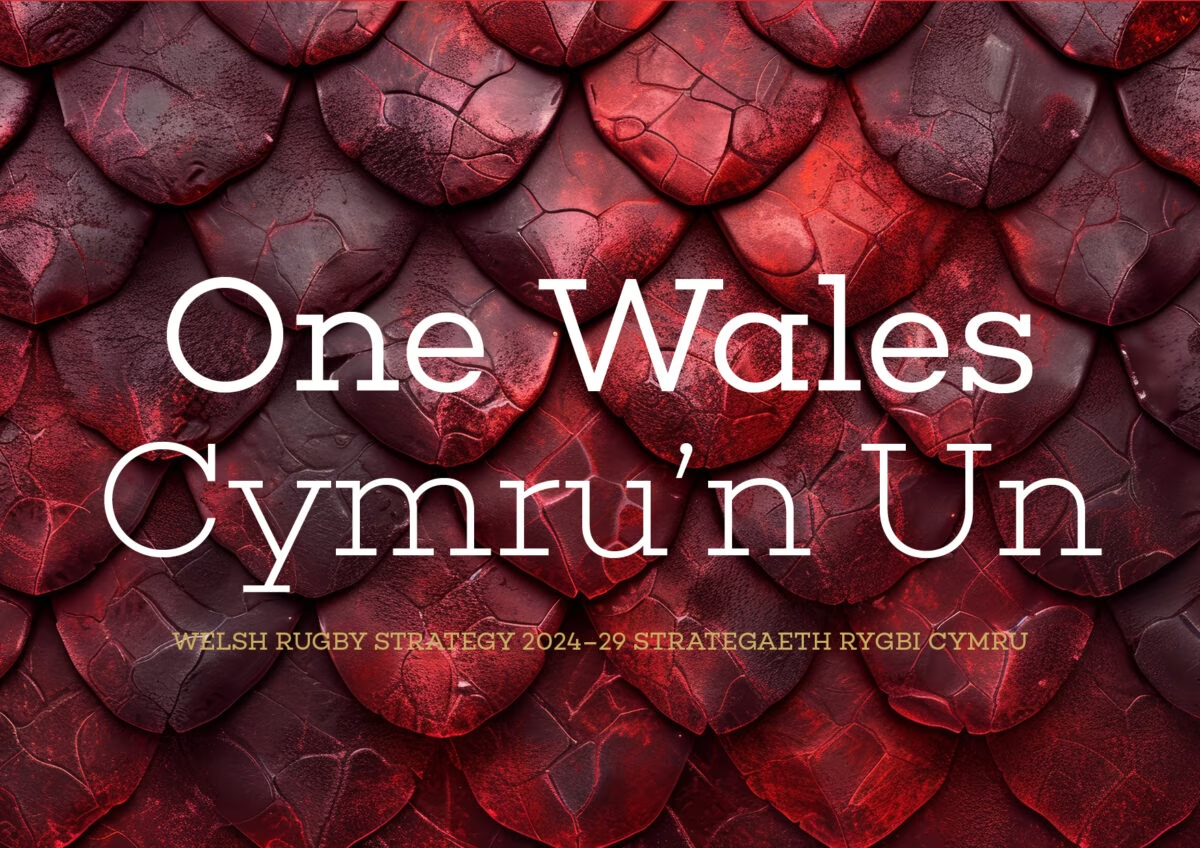Following the launch of the new ‘One Wales’ headline strategy for Welsh rugby at Principality Stadium this week, Welsh Rugby Union Chief Financial Officer Leighton Davies has issued an easy to follow guide to the finances discussed.
Davies is keen to maintain the transparent approach taken by CEO Abi Tierney and Chair Richard Collier-Keywood and makes the following points of clarification:
£35m/£29m – this number has been referred to as a £35m predicted funding gap for the professional regional clubs in Wales. As part of our ongoing collaboration with the four regional clubs, the analysis has been refined and the number has been recently restated as £29m, but it should be noted that this is a total sum predicted figure for a five year period until 2029. It represents the estimated gap in funding in total across all of the four regional clubs, which would be needed in addition to current funding, to facilitate the success defined by the ‘One Wales’ strategy. Put another way the figure represents an estimated £1.45m gap in funding per year, per regional club over five years, which would be needed to achieve goals set.
This is an estimation of the additional figure required to set us up for success in the years ahead. The figure is not exact because it is a prediction.
£4.5m – This number is the salary cap for each of the four regional clubs. The salary cap is agreed at Professional Rugby Board (PRB) and so is a collective agreement between the four regional clubs and the Union. The idea of the salary cap is that it controls the market for players in Wales and guards against unnecessary inflation of wages, i.e. when two regional clubs in Wales may both wish to employ the same player and so compete for his services. Working alongside the 25-cap rule, which is intended to deter players from leaving to other markets, it has helped reset the market in Wales.
£4.275m – Sometimes rounded-up and so confused with the above £4.5m figure. These are two separate figures. This is the amount of money transferred to regional clubs, per regional club, per year from the WRU in return for their services, put crudely the provision of players for the international game. It is important to note that this is not a limit on income. The regional clubs can and do generate significant additional funds from competitions, other commercial activity, via generous partners and backers and through the shared services initiative mentioned below. It is obviously at the PRB’s discretion to raise the salary cap described above if enough significant income can be generated independently of the £4.275m funding allocated. This increase in funding is one of the goals of the ‘One Wales’ strategy.
£15m – We have discussed a £15m deficit over the last two years in the WRU’s accounts. This does not mean a £15m loss has been posted in these two years. The reason for mentioning this deficit is to explain that money from CVC – who invested in the Six Nations and URC competitions – has historically covered this deficit. This is important to note because the receipts from this CVC investment will stop in 2026. So, we need to factor in this £15m deficit from this time. The CVC deal is complex but, put simply, the WRU sold a one-seventh share in future income from both the Six Nations and 28% of the URC and EPCR competitions. The plan at the time of this deal was to use the money from this sale to invest in future projects which would bring income to Welsh rugby to replace the one-seventh shortfall from Six Nations and broadly one-third from URC and EPCR. It was understandably anticipated at the time that the total income from these competitions would increase with CVC involvement. These plans were upset by the advent of the Covid pandemic, which meant much of this income was used to ensure the survival of the game in Wales.
£20m – this number is used in two different context:
Firstly, this is the amount of debt the WRU is currently carrying. This is not an unusual number for a £100m business. It is not de-stabilising. The business is in a stable condition. However, there is value to be gained from refinancing this debt and this will help us to bridge the funding gap in the professional game we describe.
Secondly, this is broadly the sum of the debt taken on over the course of the pandemic specifically to ensure our regional clubs were sustained. This debt is held by the regional clubs, and it has an impact on their ability to raise additional debt finance. The interest on the loans negatively impacts the £29m funding gap over five-years that we have identified and Welsh rugby is engaged in positive negotiations to re-finance these loans. They are currently held at a commercial market rate.
£13m -The amount of grants Welsh Government gave to Welsh rugby to help it through the covid pandemic.
£3m – this is the amount of savings we have already identified in the professional game in Wales. This money is saved by the introduction of a shared services collaboration with the four regional clubs in an agreement which forms part of the ‘One Wales’ strategy. This is an annual cost efficiency and has been considered in calculating the funding gap described. A new Head of Commercial Growth Officer appointment will oversee this shared services work as well as seek to grow the commercial value of the professional game in Wales – to further bridge the funding gap.

